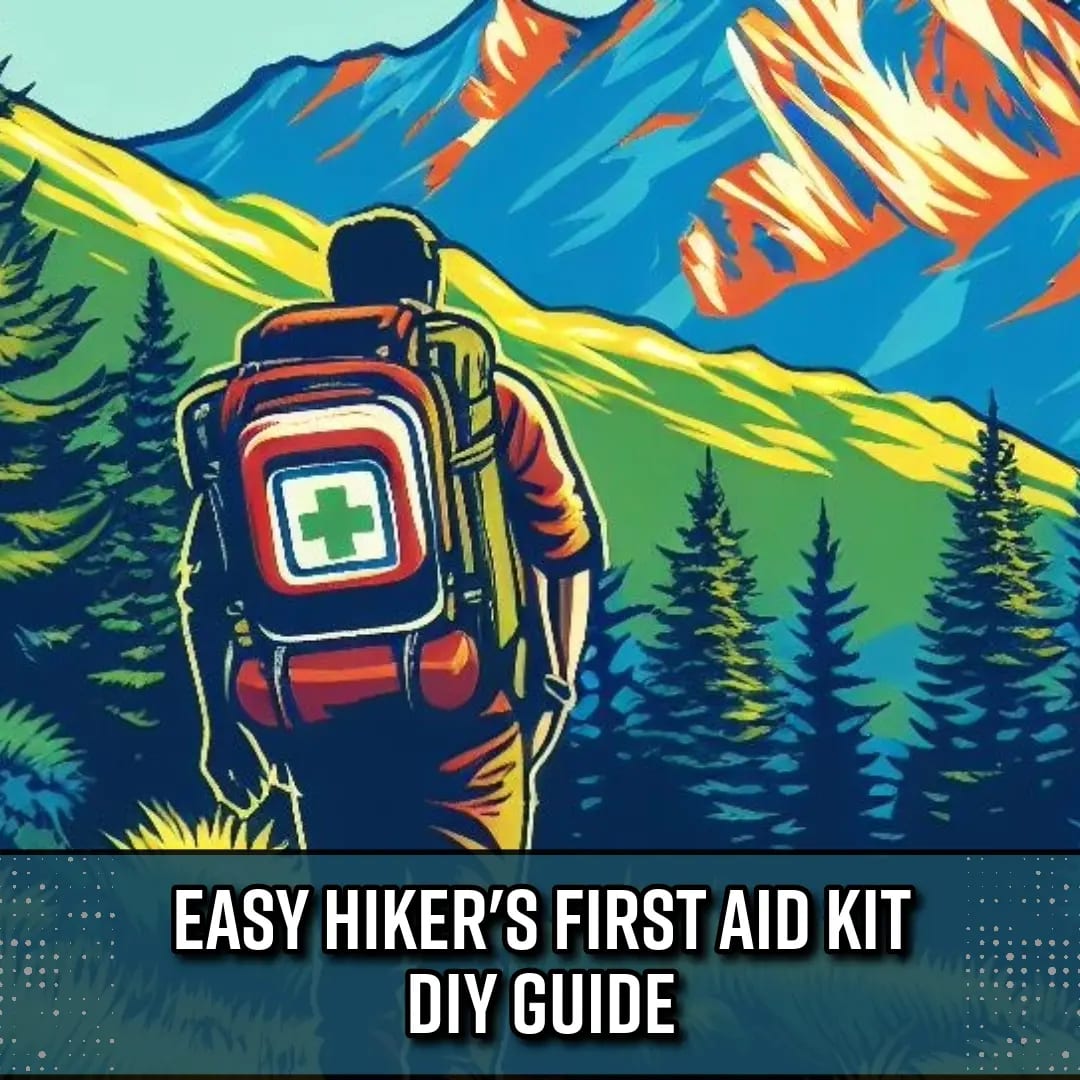How to avoid snake bites while hiking
- Last Updated:
Today we are going to cover everything you need to know to be proactive and knowledgeable about snake bite prevention while hiking. When we first moved to New Mexico we expected to see snakes every time we hit the trail so we did a lot of reading. With what we learned we can enjoy our hiking adventures with peace of mind and we’re going to share it with you so you can too.
Key Takeaways:
- Know the facts about snakebite causes.
- Research local snakes and their behavior before hiking.
- Stay on designated hiking trails to reduce the chances of snake encounters.
- Dress appropriately with long pants and sturdy boots for added protection.
- Use trekking poles or a stick to push vegetation and increase visibility.
- Maintain a distance from snakes if encountered and seek medical attention if bitten.
Some facts about snakebites
There is no reason to be scared of snakes while hiking. While hiking, it is pretty common to encounter snakes and most of them will want nothing to do with you. Snakes don’t understand what humans are the way that many animals do, but they know that we are big, dangerous, and not food. If you give them space and don’t pick them up you are unlikely to ever have any problems with snakes.
Most bites end up being because the unlucky victim inadvertently stepped, sat, or reached someplace a snake was. Sadly this sudden intrusion often causes the snake to defend itself. Even nonvenomous snakes will bite when they feel threatened. By following the information in this guide and being aware of your surroundings you can reduce your risks of getting bit.
Another thing that might help you feel more comfortable, venomous snake bites are uncommon. According to John Hopkins Medicine about 8,000 people a year get bitten by a venomous snake. On average 5 or 0.0625% of those bites are fatal. Of course the experience of getting bitten by a venomous snake is something we want to avoid if at all possible. So, let’s talk about how to do that.
Be Prepared: Do Your Research About Local Snakes
Snake Identification
In the United States, there are 4 main types of venomous snakes; rattlesnake, copperhead, cottonmouth, and coral snake. With only 4 types of snakes, you might think that identification would seem simple. When you count all the various breeds and regional variations, it becomes quite challenging.
This means that the only safe option is to either take the time to learn the local snakes or treat every snake as if it’s dangerous. We recommend learning because we are kinda nature nerds, but we see how that isn’t for everyone. Feel free to skip this section if reading about snakes sounds awful.
If you do want to do some research there are some great ways to do that. We are old school and prefer books like the one below. One of the main reasons is that we can bring it with us and use it in places where we don’t have reliable cell service.
It turns out the internet is pretty nice for research as well. One of our favorite online resources for snakes is the /r/WhatsThisSnake subreddit. Every day people are posting pictures of snakes they encounter and the internet springs into action identifying them. It’s pretty cool.
The local wildlife management agencies, zoos, and nature centers will also be able to help you learn about the local snakes. You can check their website or give them a call. Most of these places will have someone who would love to help you. Many times these local experts will know things that you won’t easily find online.
Snake Behavior
In general snakes are most active in the morning and evening as they hunt for food. Since they are cold blooded they are often found in the sun during the colder parts of the day, and in the shade during the warmer parts of the day. Snakes have many natural predators and rely on their camouflage as their first line of defense. This makes them very difficult to see and is one of the main reasons to avoid underbrush, tall grass, and loose rocks where they hide.
These are general truisms about snakes but they aren’t foolproof. Stay alert for all potential dangers, not just snakes, at all times when hiking.

U.S. Guide to Venomous Snakes and Their Mimics This easy-to-use guide is the most comprehensive resource for snake admirers in the United States. Full-color photographs for every venomous snake in the country make for easy reference, and dividing the snakes based on their regional habitats makes finding the right snake a breeze.
Watch Your Step
When hiking in snake territory, it’s crucial to watch your step and be aware of your surroundings. Taking extra care can help you avoid snake encounters and potential bites.
Avoid stepping over large logs or rocks, as snakes may be hiding underneath. Instead, step on them to create vibrations that can alert any snakes to your presence. Be especially cautious in areas with tall grass or dense underbrush, as these provide hiding spots for snakes.
Remember to stay vigilant and observant while hiking, keeping an eye out for any signs of snakes such as movement or patterns on the ground. By being aware and taking precautions, you can greatly reduce the risk of snake bites while enjoying your hike.
Stepping Carefully Tips:
- Pay attention to your surroundings and watch your step, especially in snake-prone areas.
- Step on logs and rocks instead of stepping over them to avoid accidentally stepping on a snake.
- Be vigilant in areas with tall grass or dense underbrush, as snakes may be hiding there.
- Stay observant and keep an eye out for any signs of snakes, such as movement or patterns on the ground.
Check Trail Reviews
You should be checking the trail reviews online before planning a hike at a new trail. Not only can you learn about recent snake sightings, but you will have more information about the trail and be better prepared in general. When hiking that is always a good thing.
Trail review websites can provide you with accounts of snake sightings and places on the trail to be extra careful. Pay attention to the dates of the reviews to ensure the information is current and relevant to your planned hiking trip. Reviews mentioning recent snake sightings may indicate an increased presence or activity of snakes in the area.

Stay on the trail
We were often told while growing up not to walk where we couldn’t see our feet. It’s not always possible when hiking, but it’s still good advice, especially in snake territory. Not only does this help you avoid snakes, it also plays a significant role in preserving natural areas. By staying on the established paths, we reduce our impact on the environment, protecting the habitats of various wildlife species, including snakes. It’s important to respect trail boundaries and follow park regulations to ensure a safe and enjoyable hiking experience.
Advantages of Staying on the Trail
- Minimizes the risk of snake encounters
- Preserves natural habitats and ecosystems
- Reduces the chances of disturbing snake nests or habitats
- Allows wildlife to coexist undisturbed
- Enhances overall safety and enjoyment of the hiking experience
Dress For Safety
- When hiking in snake territory we recommend wearing long pants to provide an extra layer of protection. Choose pants made of sturdy, durable material that covers your legs. It may not seem like much but denim clothing can reduce the amount of venom injected by as much as 60%.
- Snake bites on the legs are seldom above the ankle so hiking boots provide a good amount of snake bite protection. Choose boots that are tall enough to protect your ankles and lower legs. Your regular hiking boots will most likely be just fine.
- If you will be hiking through tall vegetation you may want to consider purchasing a pair of snake gaiters for extra protection. We don’t know anyone who has ever used them but after doing some research the ones below look like the best option.

KINPEE Snake Gaiters Snake Guards, Snake Gaiters for Men & Women Snake Guards for Legs, Snake Proof Gaiters Snake Bite Protection for Lower Legs
Use Trekking Poles or a Stick
We are recent trekking pole converts and part of the reason is because of how useful they are in snake territory. Using trekking poles or a long stick can be beneficial in avoiding snakes. As you walk, use the poles to push back any tall grass and vegetation along the trail. This action not only helps create a clear path for you but also increases visibility, allowing you to spot any snakes before getting too close.
Pushing the grass with trekking poles to expose and disturb any hidden snakes. Usually, this will make them move away from the path. Even when it doesn’t it will still give you an advantage. By doing this, you can avoid the snakes and choose another route. Remember to push the grass and vegetation from a safe distance to maintain your own safety. If you want some buying advice, check out our guide on picking out the right trekking poles.
Benefits of Using Trekking Poles or a Stick:
- Increased visibility and ability to detect snakes
- Creates a clear path by pushing back grass and vegetation
- Enhanced safety and stability during the hike
- Can be used for support and balance on challenging terrain
What to Do If/When You See A Snake?
Encountering a snake while hiking can be a startling experience. It’s important to remain calm and take the appropriate steps to ensure a safe encounter for both you and the snake. By following these guidelines, you can enjoy the beauty of nature while minimizing any potential risks. Here are some guidelines on how to handle seeing a snake while hiking:
- Maintain distance: As soon as you spot a snake, it’s crucial to maintain a safe distance. Keep at least 3 feet away from the snake. Most snakes in America can only strike a couple of feet so 3 feet is a minimum safe distance. If you can put more space between you and the snake even better. Remember, snakes typically only bite if they feel threatened or cornered.
- Observe from a distance: Rather than approaching the snake, it’s best to observe it from a safe distance. Use the zoom feature on your phone or camera to take pictures if you want to record the encounter. This way, you can appreciate the snake’s beauty and behavior without putting yourself at risk.
- Stay still and calm: If the snake appears agitated or starts to move towards you, it’s crucial to stay still and remain calm. Sudden movements or loud noises can startle the snake and increase the chances of a defensive response. Remember, snakes usually prefer to avoid confrontation if given the opportunity.
- Wait for the snake to move away: In most cases, the snake will eventually move away on its own, especially if it doesn’t feel threatened. Simply wait until the snake retreats back into its natural habitat before continuing your hike.
- If the snake isn’t moving: Don’t try and spook the snake. A spooked snake may react aggressively. Give the snake as much space as possible and make your way around it if possible.

How to Treat Snake Bites While Hiking
No matter how careful and prepared you are it’s possible for you, or someone else, to get bitten by a snake. It it happens try and remain calm. If you didn’t see the bite happen look for puncture marks to verify a snake bite. Common reactions of a venomous bite are redness and swelling, severe pain, nausea, labored breathing, and disturbed vision. If you or someone in your hiking group experiences these symptoms, it’s important to take immediate action but there is no need to panic. Snake bites, while very unpleasant, are very seldom fatal.
What you need to do is get the victim to medical assistance as quickly and safely as possible. There is very little that can be done in the field so keeping the victim calm and getting out should be the biggest priorities. First aid beyond over-the-counter pain relief, cleaning the wound with soap and water, and a clean, dry dressing isn’t necessary unless a medical expert says so.
What not to do
We are going to cover this in detail soon but I think a few things are important enough to bring up here. Sadly most of us have heard some bad advice at one point or another about snake bites that can cause problems. So let’s talk about what not to do.
- Snake bite kits and any folk remedy you may have heard are all worthless and will only cause more harm than good.
- Don’t try to catch or kill the snake. Why this myth persists is a mystery.
- Don’t use a tourniquet to slow the venom spreading.
- Don’t try to suck out the venom or cut the wound open or anything like that.
- Don’t panic.
FAQ
Q: How can I avoid snake bites while hiking?
A: To avoid snake bites while hiking, it's important to be aware of your surroundings and watch your step. Familiarize yourself with the appearance and behavior of venomous snakes in your area. Stay on designated trails, wear appropriate clothing, and use trekking poles or a stick to create a clear path. Research trail reviews for any recent snake sightings and know what to do if you encounter a snake.
Q: How do I identify venomous snakes?
A: Before hiking, do your research and learn about the types of snakes that may be present in the area. Familiarize yourself with the appearance and behavior of venomous snakes. Consider bringing a printout or field guide to aid in identification while on the trail. This knowledge will help you make informed decisions and take appropriate precautions.
Q: What should I do if I come across a snake while hiking?
A: If you come across a snake while hiking, the best course of action is to calmly and slowly move away. Maintain a distance of at least 3 feet from the snake to avoid triggering defensive behavior. Do not attempt to handle or approach the snake for identification. Use zoom features on your phone or camera to take pictures from a safe distance if you want to record the encounter.
Q: What are the signs and symptoms of a snake bite?
A: Common signs and symptoms of a snake bite include puncture marks at the wound, redness and swelling, severe pain, nausea, labored breathing, and disturbed vision. If you or someone else is bitten by a snake, it is important to seek medical attention immediately.
Q: What should I do if I get bitten by a snake while hiking?
A: If bitten by a snake while hiking, it's important to seek medical attention immediately. Wash the wound with warm soapy water, cover it with a clean, dry dressing, and avoid common misconceptions like attempting to suck out the venom or apply tourniquets. Prompt medical treatment is crucial.
Before You Go …
Now that you feel better prepared for the occasional snake encounter while hiking you should check out our article on bear safety for hikers! We hope that this article was helpful. If you liked this post please share with your friends and family. See you on the trails!
If You Found This Helpful, Please Share:
By Summer and Bill

Summer and Bill are the dynamic duo behind Adventureite.com, a blog dedicated to inspiring others to explore the great outdoors. With a combined lifetime of experience traveling and adventuring across America, they have a wealth of knowledge to share. From hiking to camping, kayaking to travel, Summer and Bill are passionate about helping others discover the beauty of the natural world.
 Adventureite
Adventureite






